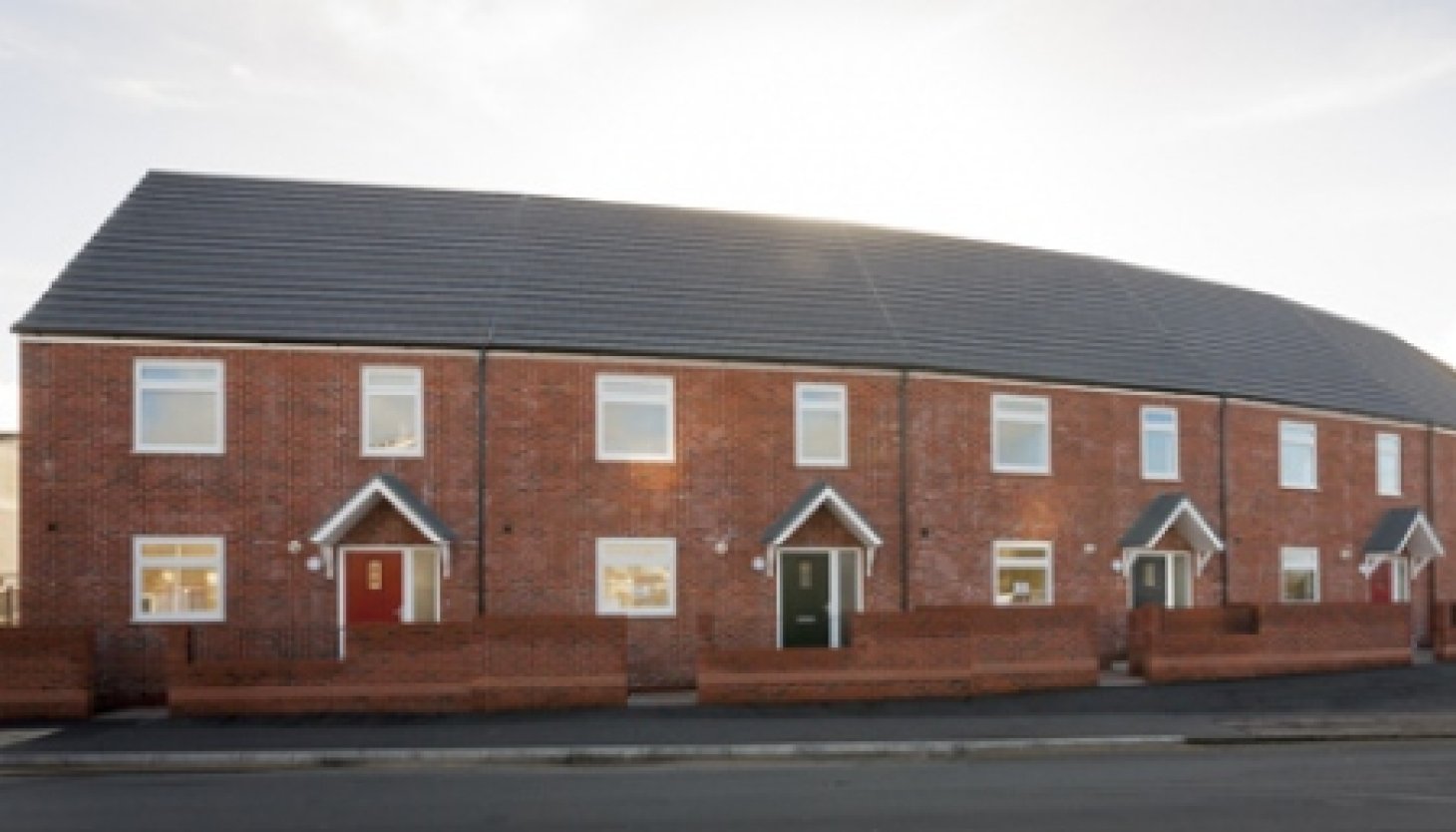
H+H’s innovative Rå Build method has been used at Britannia Crescent, Great Yarmouth. The arc-shaped development consists of 19 three-bedroom houses and is built on the site of the former Beach Coach Station car park.
Contractor R G Carter wanted to use aircrete as a construction solution to provide outstanding thermal and acoustic insulation to the development – which has been designed to the Lifetime Homes Standard. The Thin-Joint system was chosen in particular for its speed of construction and exceptional sustainability credentials, as well as being highly adaptable to allow any late design changes to be incorporated. The system achieves A+ rating in the BRE’s Green Guide to Housing Specification.
To simplify the procurement process, the H+H estimating team supplied a Thin-Joint Package Sale comprising the essential components for Thin-Joint block-work. This was a first for R G Carter. The package included Standard Grade Multi-Plate 3.6N blocks and quick-setting Thin-Joint Celfix mortar used to build the internal leaf of the external cavity walls and separating walls. This method allowed for a weather-tight masonry shell to be built cost-effectively and quickly. The package sale eliminated any site confusion and reduced waste.
George Williams, Contracts Manager at R G Carter said: “We wanted a solution that was more flexible than timber frame, one that would allow design tweaks to be incorporated without too much difficulty.”
As part of the Rå Build method, H+H worked with R G Carter during the ten-month project to provide wall U-Value calculations and on-site Thin-Joint training. A minimum U-Value of 0.24W/m2 K was achieved and the development easily met Part L and Part E of the Building Regulations.
Aircrete falls between lightweight construction and heavyweight, putting it in the unique position of being able to combine a low lambda value with a relatively high thermal mass. Made of 80% recyclable fuel ash, the structure also contains millions of air cells giving the block inherent thermal insulation. As a result, the blocks have the ability to absorb heat during the day and release it at night to create a comfortable internal environment – meeting the design requirements of the Lifetime Homes concept.